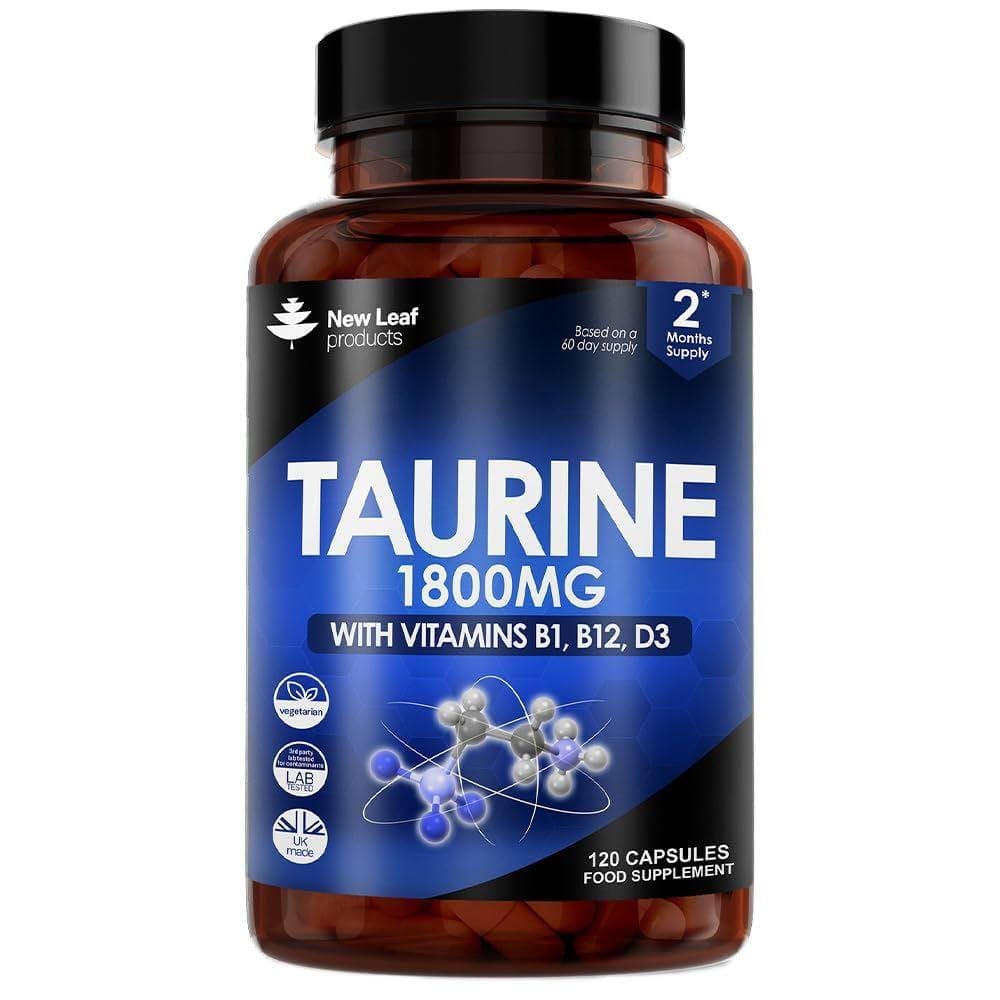
A recent surge in popularity of taurine as a potential anti-aging supplement has prompted significant scientific interest. However, a study by researchers at the National Institutes of Health (NIH) has cast doubt on its viability as a reliable biomarker of aging. This article will delve into the NIH’s findings, examining the evidence suggesting that, despite its potential health benefits, taurine levels in the body are unlikely to provide valuable insights into an individual’s biological age or predict longevity. We will explore the nuances of the research, considering potential limitations and alternative interpretations of the data.
Table of Contents
- Taurine Levels Show Weak Correlation with Healthspan Markers in NIA Aging Studies
- Study Finds Inconsistent Association Between Taurine and Major Age Related Outcomes
- Research Suggests Limited Utility of Taurine as an Independent Aging Biomarker
- Alternative Biomarker Strategies Warranted for Accurate Aging Assessment
- Q&A
- The Way Forward

Taurine Levels Show Weak Correlation with Healthspan Markers in NIA Aging Studies
Recent studies leveraging data from the National Institute on Aging (NIA) aging studies suggest a lukewarm relationship between taurine levels and established healthspan markers. While taurine, an amino acid found in various tissues, has garnered attention for its potential antioxidant and anti-inflammatory properties, these properties don’t neatly translate into significantly improved aging profiles, at least not according to core indicators. Researchers analyzed a robust dataset, scrutinizing correlations between taurine concentrations and:
- Mortality rates
- Incidence of age-related diseases such as cardiovascular disease and diabetes
- Measures of physical function
The analysis revealed only weak and inconsistent correlations, leading researchers to temper enthusiasm for using taurine levels as a reliable indicator of overall healthspan or biological age. Although taurine may play a role in specific cellular processes, its systemic levels don’t appear to be a strong predictor of healthy aging across a population. Therefore, direct benefits that are commonly attributed to taurine must be taken with caution.
| Marker | Correlation with Taurine |
|---|---|
| Mortality | Weak, Inconsistent |
| Cardiovascular Disease | Minimal |
| Physical Function | Slightly Positive |

Study Finds Inconsistent Association Between Taurine and Major Age Related Outcomes
NIH researchers conclude that taurine is unlikely to be a good aging biomarker
New research pouring in from the National Institutes of Health (NIH) suggests a less-than-straightforward relationship between taurine levels and major age-related health outcomes. While taurine, an amino acid found in various foods and energy drinks, has garnered attention for its potential anti-aging properties, this latest study throws a wrench into the idea that it’s a reliable indicator of biological age or future health risks. The researchers meticulously analyzed data from a large-scale cohort, examining the correlation between taurine concentrations and various factors associated with aging. Data unveiled some confounding results, indicating that:
- The connection between taurine levels and age was inconsistent across different populations
- Higher taurine levels were not always associated with improved health outcomes
- Other biomarkers seemed to be more strongly linked to overall health and longevity
The findings highlight the complex interplay of factors impacting aging. While some studies have pointed towards taurine supplementation improving certain physiological functions, this research urges caution in interpreting taurine levels as a straightforward measure of biological age or predictor of age-related decline. The study suggests that using taurine alone as a biomarker for aging could be misleading, and a more comprehensive approach considering multiple biomarkers is crucial for accurately assessing an individual’s health trajectory. Possible confounding factors that influence taurine levels and were considered during the analysis were:
| Confounding Factor | Potential Influence |
|---|---|
| Dialysis | Increased taurine levels |
| Medications | Affect taurine absorption |
| Diet | Alters taurine production |

Research Suggests Limited Utility of Taurine as an Independent Aging Biomarker
A recent study from the National Institutes of Health (NIH) casts doubt on the widespread enthusiasm surrounding taurine as a reliable indicator of aging. While previous research has linked taurine levels to various age-related processes, the new findings suggest that relying solely on taurine concentrations to gauge biological age may be premature. Researchers examined a large dataset, scrutinizing the correlation between taurine levels and other established aging biomarkers. Their analysis revealed a weak and inconsistent relationship, prompting them to question taurine’s utility as an independent predictor.
So, what does this mean for the future of aging research? Certainly, further investigation is needed to fully understand the complex role of taurine in the aging process. The NIH study highlights the importance of considering a multi-faceted approach to assessing biological age, rather than relying on a single biomarker. Future research directions might include:
- Exploring the interplay between taurine and other metabolites
- Investigating the impact of dietary taurine supplementation on various health outcomes in different age groups
- Examining the tissue-specific changes in taurine levels during aging
| Biomarker | Reliability Score (1-5, 5=Highest) |
|---|---|
| Taurine (as independent biomarker) | 2 |
| Telomere Length | 4 |
| DNA Methylation | 5 |

Alternative Biomarker Strategies Warranted for Accurate Aging Assessment
The quest for reliable biomarkers to accurately gauge the aging process continues, despite a recent setback spotlighting the challenges in identifying definitive indicators. Researchers at the National Institutes of Health (NIH) have cast doubt on taurine, an amino acid previously considered a promising candidate, as a robust biomarker for aging. Their findings suggest that while taurine levels may fluctuate with age and disease, these changes are not consistently correlated with physiological decline or overall healthspan. This highlights a critical need to broaden our scope and explore alternative avenues in biomarker research. Effective aging biomarkers should ideally:
- Reflect the rate of biological aging: Distinguishing biological age from chronological age is paramount.
- Be readily measurable: Accessibility and cost-effectiveness are essential for widespread application.
- Demonstrate predictive validity: They should accurately forecast future health outcomes and lifespan.
Given the complexity of the aging process, a single biomarker like taurine is unlikely to capture the full picture. Future strategies might benefit from a multi-omic approach, integrating data from genomics, proteomics, and metabolomics to create a more holistic and reliable aging assessment. This could include:
| Biomarker Category | Potential Candidates |
| Telomere Length | Average telomere length, rate of telomere shortening |
| Epigenetic Markers | DNA methylation patterns (e.g., “epigenetic clock”) |
| Metabolic Markers | Specific lipid profiles, advanced glycation end-products (AGEs) |
By considering a wider range of interconnected factors, we stand a better chance of developing accurate and personalized strategies for monitoring and potentially influencing the aging process.
Q&A
Q&A: NIH Researchers Shed Light on Taurine as an Aging Biomarker
This Q&A addresses recent findings by NIH researchers regarding the suitability of taurine as a reliable biomarker for aging in humans and animals.
Q: What is taurine, and why has it been investigated as a potential biomarker of aging?
A: Taurine is an organic compound, specifically an amino sulfonic acid, naturally occurring in animal tissues. It plays various roles in cellular function, including antioxidant defense, osmoregulation (maintaining fluid balance), and calcium signaling. Previous research has suggested a link between taurine levels and lifespan in certain animal models, fueling interest in its potential as an indicator of age-related biological processes and overall health.
Q: What did this recent NIH study investigate?
A: This research aimed to systematically assess the relationship between taurine levels and aging across a diverse range of species. The researchers analyzed taurine concentrations in the blood and tissues of animals with varying lifespans and aging rates. They also examined the impact of age on taurine metabolism and synthesis.
Q: What were the main findings of the NIH research?
A: The study revealed a complex and inconsistent relationship between taurine levels and aging. While some animal models showed a decline in taurine with age, others displayed no significant change or even an increase. These findings suggest that taurine levels are not a universally reliable indicator of biological age across different species.
Q: Why do these findings suggest that taurine might not be a good aging biomarker?
A: For a biomarker to be reliable, it should consistently correlate with age-related decline and reflect underlying biological processes associated with aging. The NIH researchers found significant variability in taurine levels and their relationship with age, undermining its suitability as a robust and generally applicable aging biomarker. The complex interplay of factors affecting taurine metabolism likely contributes to this inconsistency.
Q: Did the research indicate any specific downsides to relying on taurine as an aging biomarker?
A: The lack of consistent correlation with age across different species is the primary downside. Different animals have vastly different physiological processes, and relying on taurine levels alone could lead to inaccurate or misleading assessments of biological age and age-related health risks.
Q: Does this research mean that taurine is not important for health or longevity?
A: Not at all. While the research suggests taurine isn’t a reliable aging biomarker, it doesn’t negate its potential benefits or roles in various physiological functions. Further research is needed to fully understand the specific effects of taurine supplementation or deficiencies on health and lifespan in different contexts.
Q: Where should future research efforts be focused, given these findings?
A: Future research should focus on identifying more consistent and universally applicable biomarkers of aging. This might involve exploring combinations of biomarkers that collectively reflect a more comprehensive picture of age-related biological changes. Further investigation into the complex factors that influence taurine metabolism and its role in specific tissues or conditions could also provide valuable insights.
Q: What is the takeaway message for the general public regarding taurine and aging?
A: While taurine is involved in several important physiological processes, current evidence suggests that it may not be a reliable indicator of aging. It’s crucial to rely on comprehensive health assessments conducted by qualified medical professionals rather than relying on single biomarkers for assessing age-related health risks. The research landscape regarding taurine and its effects on health is constantly evolving, so staying informed about the latest scientific findings is important, always consulting a healthcare professional should you have any concerns.
The Way Forward
In conclusion, while earlier research hinted at a potential link between taurine levels and aging, the recent findings from NIH researchers suggest that taurine is unlikely to be a reliable biomarker for aging. Further studies are needed to fully understand the complex interplay between taurine, aging processes, and overall health. This research emphasizes the importance of continued investigation into aging mechanisms and the exploration of alternative and more robust biomarkers to track and potentially influence the aging process.

